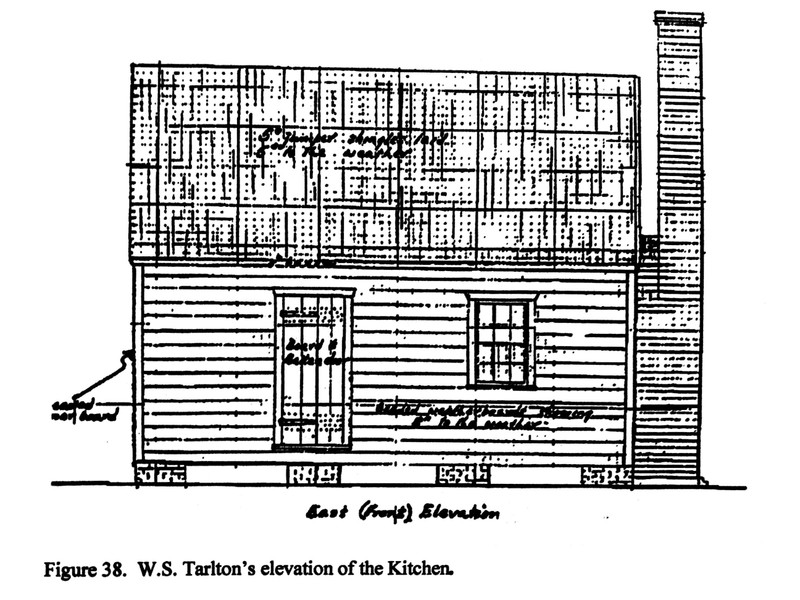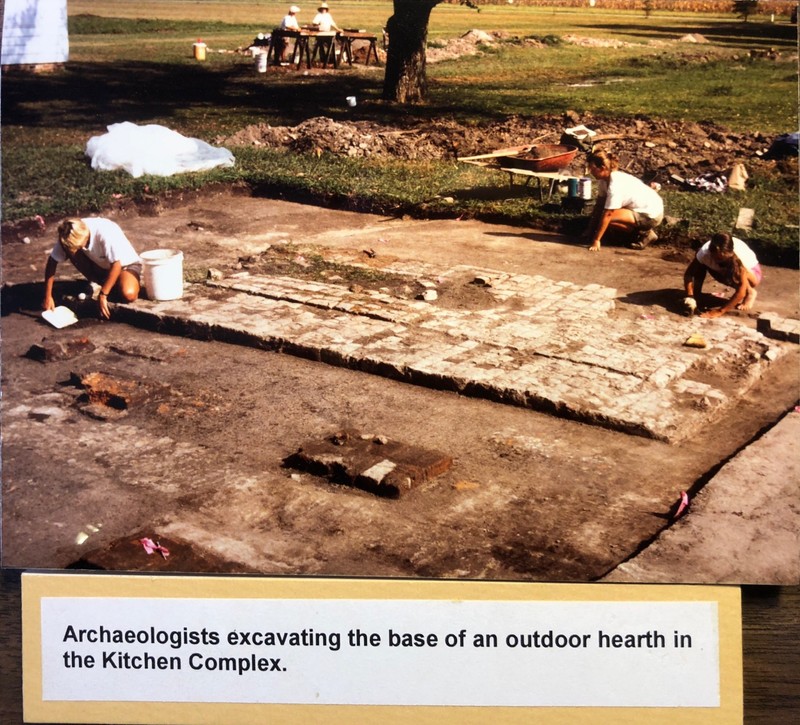Site of the Outside Hearth, Enslaved Kitchen, and Above-Ground Cistern
Introduction
Author-Uploaded Audio
Audio description of the Site of the Outside Hearth, Enslaved Kitchen, and Above-Ground Cistern by Historical Interpreter Noah Janis.
Text-to-speech Audio
This cluster of excavated foundations supported a kitchen, an above ground cistern, and a large open hearth. The midday meal for mill hands, people who worked in the barns, Blacksmiths, carpenters, and others who worked nearby may have been prepared here. Enslaved field workers ate their noon meal in the fields themselves.
Images
Elevation drawing of the Enslaved Kitchen

Archaeologists excavating the base of an outdoor hearth in the Enslaved Kitchen Complex in 1994.

Backstory and Context
Author-Uploaded Audio
Audio description of the Site of the Outside Hearth, Enslaved Kitchen, and Above-Ground Cistern by Historical Interpreter Noah Janis.
Text-to-speech Audio
This group of exposed archaeological foundations was the site of three structures: from left to right, there was a kitchen, a shed that housed an above-ground cistern, and an outdoor hearth. It was here that enslaved cooks prepared communal lunches for enslaved field hands, mill workers, skilled artisans, and people who worked in the barns. This meal was transported to field hands in large cauldrons like the one you see here, while others received their food at the kitchen. These lunches were separate from the weekly rations that enslaved persons received at the Meat House. Enslaved people also obtained their fresh water from the cistern.
Sources
Enslaved Community Kitchen, North Carolina Historic Sites. Accessed January 8th 2020. https://historicsites.nc.gov/all-sites/somerset-place/site-features/enslaved-community-kitchen.
Somerset Place State Historic Site
Somerset Place State Historic Site
